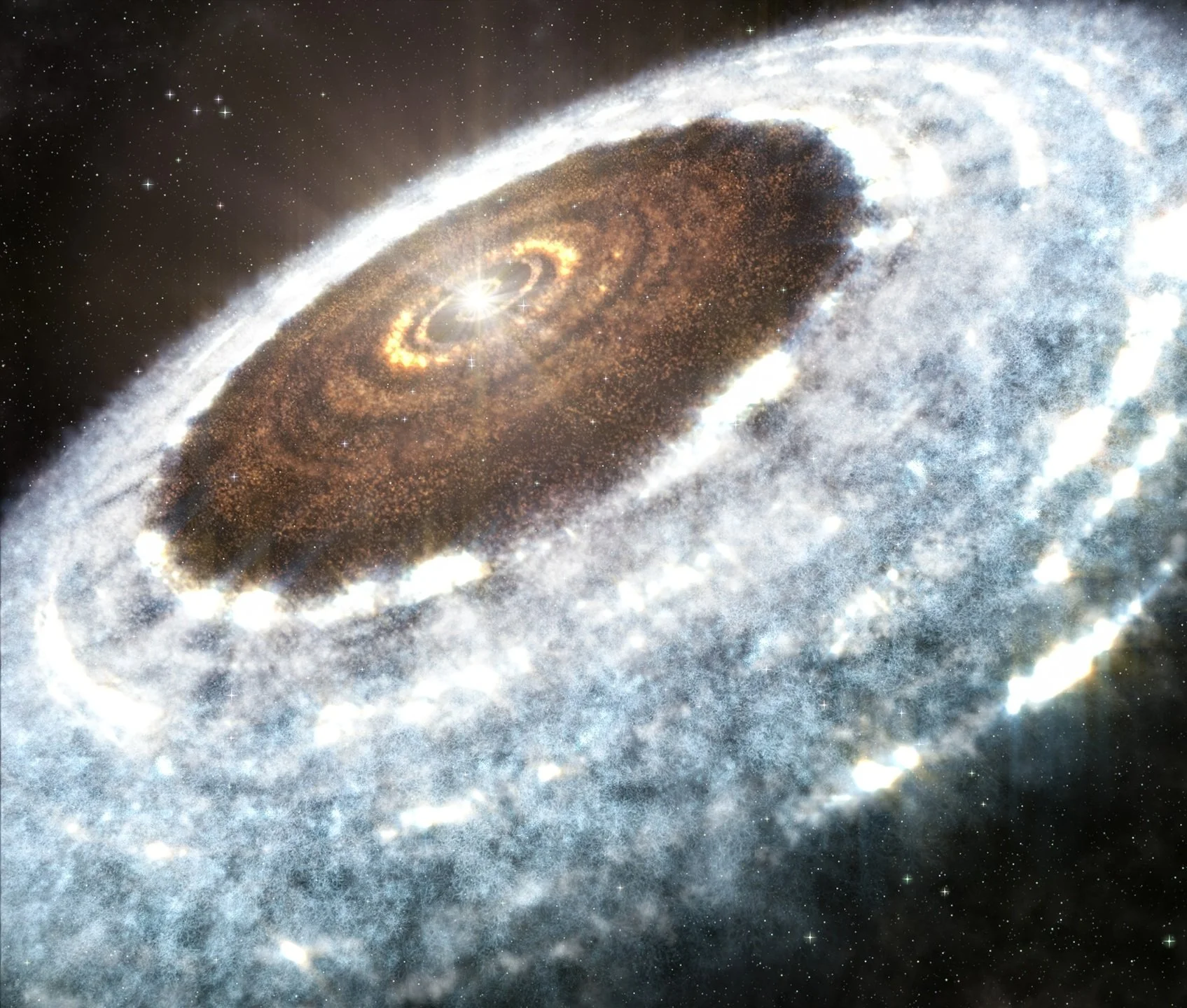Billions of years ago, both Earth and the Red Planet were warmer and wetter than they are today. On Earth, life is believed to have started in pools and seas as simple microbes. So, what if something similar happened on Mars?
Deep within an Algerian quarry, scientists stumbled upon peculiar shapes in ancient rock—a chance discovery that might point us toward a much bigger story: one that reaches across millions of miles, all the way to Mars.
New: follow us on Bluesky
Image Credit: CU/LASP EMM/EXI ITF/Kevin M. Gill via Wikimedia Commons / widescreen edit by Universal-Sci
How an Ancient Sea Crisis Could Help Us Find Mars Microbes
Research suggests that a laser-powered mass spectrometer, tested on Earth rocks similar to those found on Mars, can detect the fossilized remains of microbes. If life once thrived on the Red Planet, a similar instrument on a rover or lander might be able to spot its traces.
To prove that such technology works, scientists needed a site on Earth with mineral deposits like those on Mars—specifically, sulfate minerals such as gypsum. They chose a gypsum formation in Algeria that arose during the Messinian Salinity Crisis, a time when the Mediterranean Sea was cut off from the Atlantic Ocean and began to dry up. As the water evaporated, it left behind salt-rich layers, which could easily trap and preserve any microbes living in these waters.
On Mars, scientists believe ancient seas and lakes may have evaporated billions of years ago. Just like on Earth, those evaporating waters would have deposited minerals such as gypsum. If tiny microbes once lived in those Martian pools, they might be fossilized inside the gypsum.
Interesting article: Where did the water from Mars’ ancient lakes and rivers disappear to? - (Universal-Sci)
What a Laser-Powered Device Can Reveal
Researchers used a laser ablation ionization mass spectrometer, a compact tool designed with space missions in mind. It works by vaporizing a microscopic portion of rock with a laser, and then analyzing the chemical makeup of the vapor.
In the Algerian gypsum, the team found fossil-like filaments believed to be the remains of sulfur-oxidizing bacteria. Alongside these filaments, there were minerals like clay and dolomite, which often form in the presence of living organisms.
Here’s why that matters:
Dolomite Formation: Dolomite typically requires specific conditions to form, including higher temperatures or biological influence. Finding it encrusted around potential microbial fossils points to a biological origin.
Clay Minerals: Certain clays can also be influenced by microorganisms. When those microbes die and decompose, they leave chemical clues in the clay structure.
Shape and Composition: Under an optical microscope, the fossil threads have irregular, twisting shapes, not the neat patterns of purely mineral growths. These shapes, combined with the chemical information, strengthen the case for ancient life.
Mars missions that carry a similar laser-powered tool could search for these same chemical and structural clues—if they find gypsum or other evaporite minerals. If both filaments and particular minerals turn up together, that might be a strong indicator that microbes once existed on Mars.
Interesting article: Why building Mars habitats from fungi instead of metal is a brilliant idea - (Universal-Sci)
Could Martian Rocks Hold the Same Secret?
Although the research points to a promising method, scientists caution that we need multiple lines of evidence to confirm life on Mars. Minerals can sometimes form unusual patterns without biology, and there may be processes on Mars that we don’t fully understand yet. Confirming a genuine “biosignature” (sign of past life) would likely involve more than one instrument cross-checking each other’s results.
Nonetheless, the new research outlines a practical approach: identify the relevant minerals, assess their chemical and structural characteristics, and verify those findings with multiple techniques.
This is the first astrobiology study involving terrestrial gypsum from Algeria for a Mars comparison. For lead author and PhD student Youcef Sellam, it’s also a personal milestone. He dedicates the work, published in Frontiers in Astronomy and Space Sciences, to the memory of his father—finding comfort in the knowledge that his research could help humankind understand one of our greatest questions: Did life ever appear on another planet?
With each discovery about how fossils are preserved and identified on Earth, the dream of uncovering ancient Martian life becomes just a bit more tangible. If we can spot the remains of microorganisms in Algerian gypsum, there’s hope that a future rover, equipped with the right tools, might one day do the same on the dusty surface of Mars.
If you are interested in more details about the research, be sure to check out the paper listed below.
Sources, further reading and related articles:
Martian mystery: scientists discovered that Mars' rotation is accelerating - (Universal-Sci)
Why building Mars habitats from fungi instead of metal is a brilliant idea - (Universal-Sci)
How to generate oxygen on Mars? - (Universal-Sci)
Where did the water from Mars’ ancient lakes and rivers disappear to? - (Universal-Sci)
The search for ancient life on Mars using morphological and mass spectrometric analysis: an analog study in detecting microfossils in Messinian gypsum - (Frontiers in Astronomy and Space Sciences)
Too busy to follow science news during the week? - Consider subscribing to our (free) newsletter - (Universal-Sci Weekly) - and get the 5 most interesting science articles of the week in your inbox
FEATURED ARTICLES:








